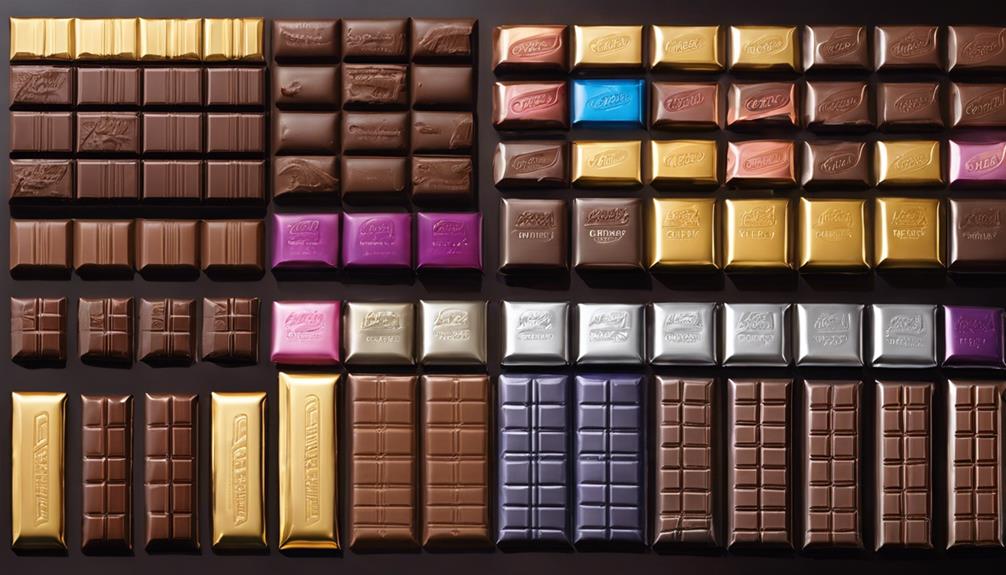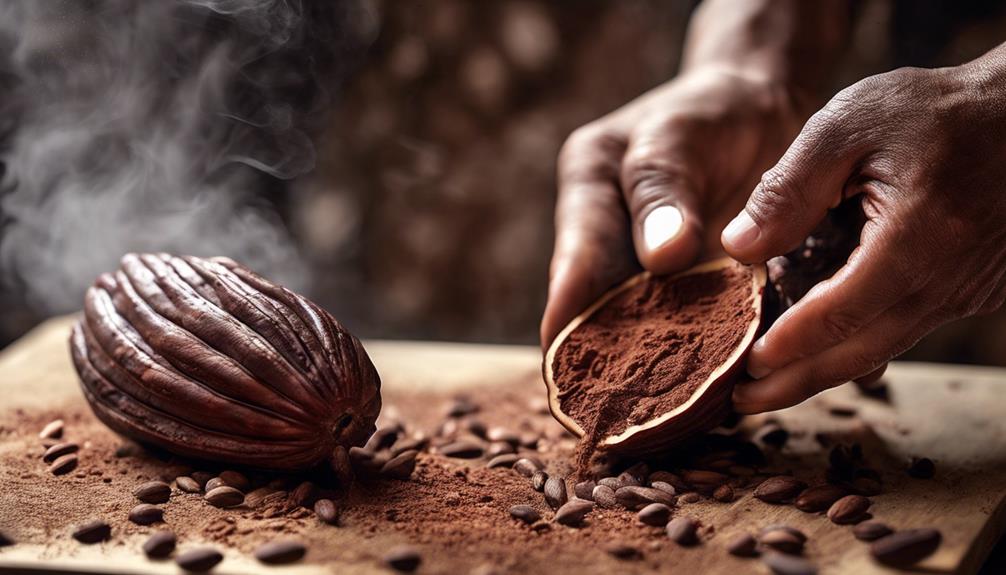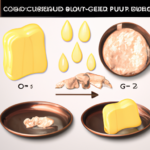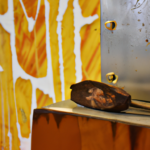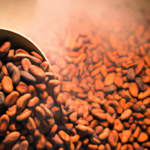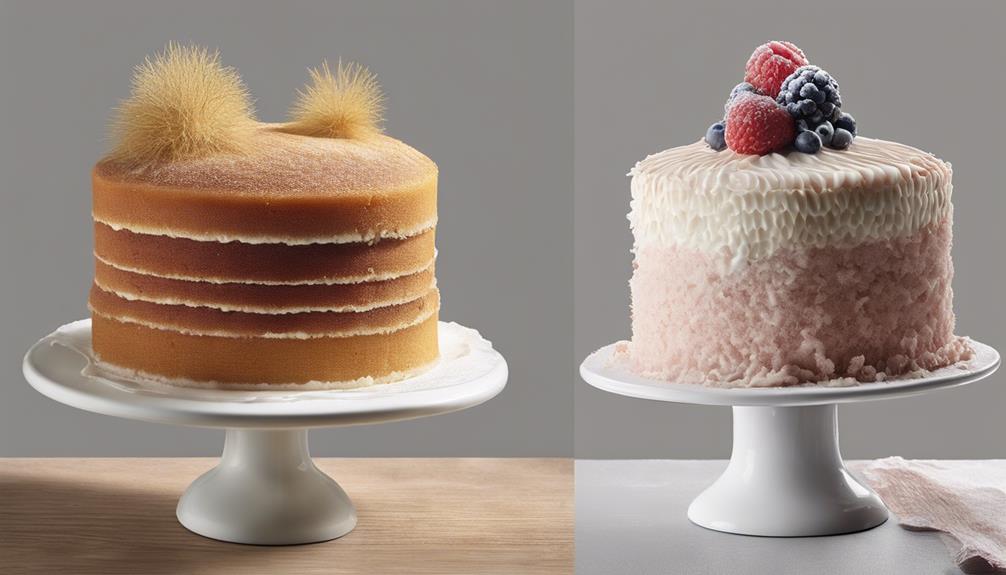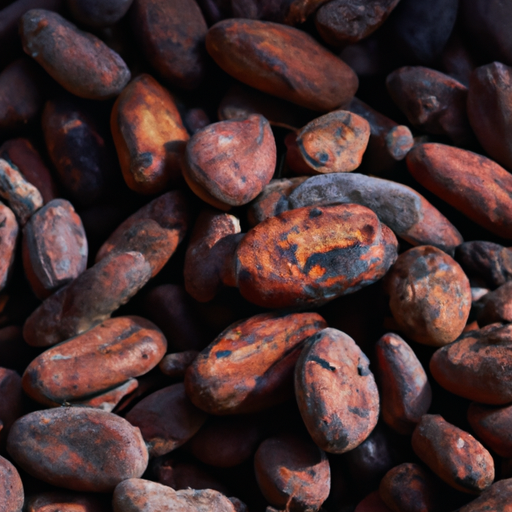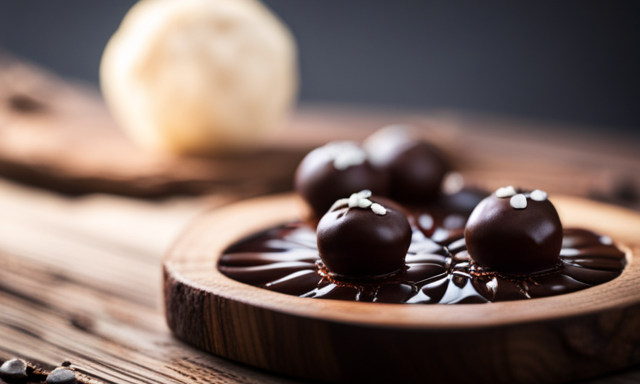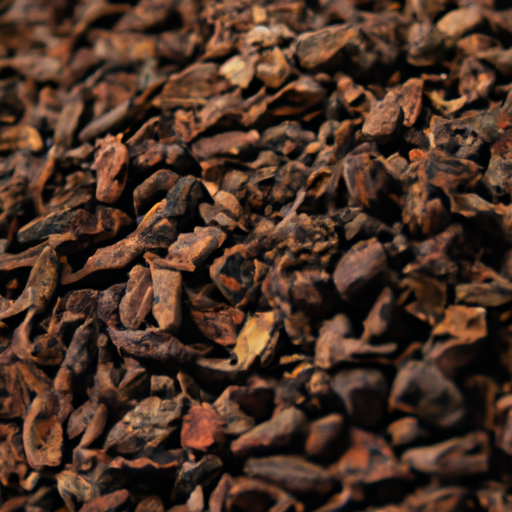When working with chocolate, it is crucial to comprehend the distinctions between tempered and untempered chocolate. Tempered chocolate is subjected to exact heating and cooling processes, which ultimately yield a glossy finish, firm texture, and satisfying snap. This technique aligns cocoa butter crystals, resulting in a professional appearance and smooth texture. On the other hand, untempered chocolate lacks glossiness and tends to be soft and chalky.
Tempered chocolate remains stable at room temperature due to its resistant crystal structure, making it ideal for coating, molding, and enhancing taste. The glossy finish of tempered chocolate signifies proper crystallization and enhances both appearance and taste, providing a polished and elegant look. Tempered chocolate also melts smoothly, ensuring a clean and consistent flavor profile. Understanding these distinctions is crucial for creating high-quality chocolate treats that look and taste impeccable.
Key Takeaways
- Tempered chocolate has a glossy finish and firm texture.
- Untempered chocolate lacks shine and has a soft, chalky mouthfeel.
- Proper cocoa butter crystal alignment ensures smooth texture.
- Tempered chocolate is stable, resistant to heat-induced melting.
- Taste quality enhanced in tempered chocolate due to proper crystallization.
Definition of Tempered Chocolate
Tempered chocolate, sometimes referred to as 'prepared chocolate,' is a meticulously processed form of chocolate that undergoes precise heating and cooling to achieve specific characteristics. When you temper chocolate, you're fundamentally controlling the formation of cocoa butter crystals within the chocolate.
This process involves heating the chocolate to a specific temperature, then cooling it down and reheating it to another precise temperature. By following these temperature changes, you encourage the cocoa butter in the chocolate to form stable crystals, which give tempered chocolate its glossy finish, firm texture, and that satisfying snap when you break it.
This careful tempering process is essential because it guarantees that the chocolate sets properly and maintains its shape at room temperature. Commercially produced chocolates often undergo this tempering process to achieve the desired quality and appearance that we all enjoy when biting into a delicious piece of chocolate.
Cocoa Butter Crystal Alignment
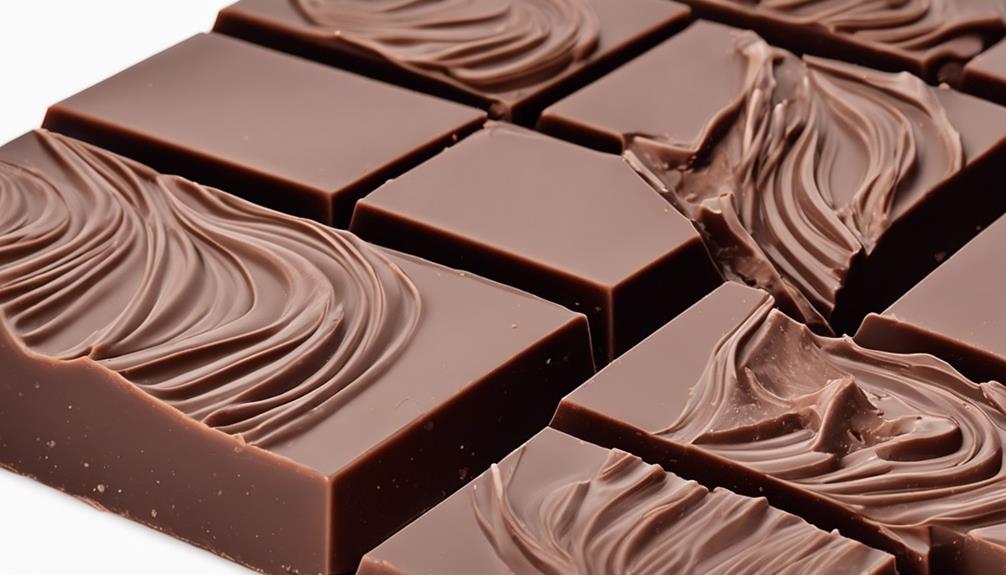
When discussing cocoa butter crystal alignment in chocolate, we're referring to how the cocoa butter molecules arrange themselves during the cooling process.
This alignment is vital because it impacts the overall texture and appearance of the chocolate.
Understanding how these crystals form, the structure of cocoa butter, and their effect on the chocolate's texture is essential in creating high-quality, glossy chocolate treats.
Crystal Formation Process
During the chocolate-making process, the cocoa butter undergoes an important crystal formation process to achieve the desired Type V crystals for tempered chocolate. This alignment of cocoa butter crystals is essential for the tempering process, as it guarantees the chocolate has a smooth texture and glossy finish. To understand the significance of crystal formation, let's compare the characteristics of Type V crystals with other crystal types:
| Crystal Type | Characteristics |
|---|---|
| Type V | Desired for tempering, |
| glossy finish | |
| Type IV | Undesirable for texture, |
| dull appearance | |
| Type VI | Undesirable for stability, |
| grainy texture |
Cocoa Butter Structure
In understanding cocoa butter structure, the alignment of cocoa butter crystals plays a significant role in determining the texture and appearance of chocolate.
- Type V cocoa butter crystals are essential for creating glossy, stable chocolate.
- The tempering process aligns cocoa butter crystals into the desired Type V form.
- Aligned cocoa butter guarantees a smooth, melt-in-your-mouth texture.
- Untempered chocolate lacks this alignment, resulting in a dull, chalky consistency.
Impact on Texture
Aligning cocoa butter crystals through tempering is essential for achieving the desired texture and mouthfeel in chocolate products. When cocoa butter crystals are properly aligned in tempered chocolate, they form a stable Type V structure, resulting in a smooth and firm texture. On the other hand, untempered chocolate lacks this alignment, leading to a soft and chalky mouthfeel. The crystal alignment in tempered chocolate not only affects the texture but also contributes to a glossy finish and a satisfying snap when broken. This alignment ensures a consistent and pleasing texture, offering a luxurious mouthfeel and a professional appearance due to the organized crystal structure.
| Tempered Chocolate | Cocoa Butter Crystals Aligned into Type V Structure | Smooth and Firm Texture |
|---|---|---|
| Untempered Chocolate | Improper Crystal Alignment | Soft and Chalky Mouthfeel |
| Crystal Alignment | Glossy Finish, Satisfying Snap When Broken | Consistent and Pleasing Texture |
| Aligned Structure | Luxurious Mouthfeel, Professional Appearance | – |
Appearance: Smooth Vs Dull
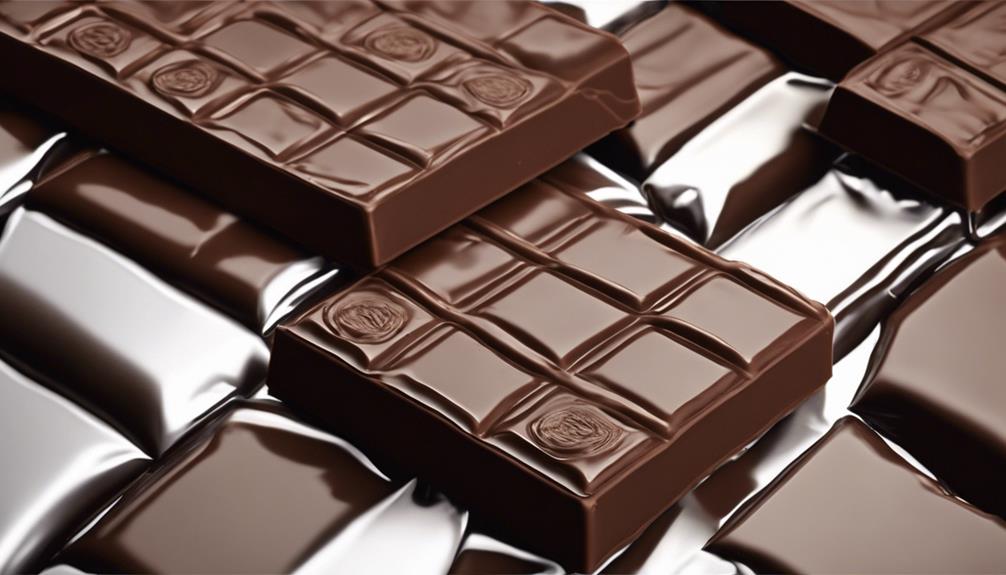
Comparing tempered and untempered chocolate, the difference in appearance is striking: one boasts a smooth, glossy finish while the other appears dull and lacks the enticing shine of its tempered counterpart. Here's why the appearance of tempered chocolate stands out from untempered chocolate:
- Professional Finish: Tempered chocolate presents a professional and polished look due to its smooth and shiny surface.
- Dullness of Untempered Chocolate: Untempered chocolate lacks the luster and glossiness that make tempered chocolate visually appealing.
- Bloom Effect: Untempered chocolate often develops white streaks or spots called bloom, giving it a blotchy appearance that's absent in tempered chocolate.
- Visually Pleasing Sheen: Tempered chocolate sets with a visually pleasing sheen that enhances its overall attractiveness, while untempered chocolate appears lackluster in comparison.
Understanding these differences in appearance can help you appreciate the visual appeal that tempered chocolate brings to confectionery and dessert creations.
Texture: Snap Vs Softness
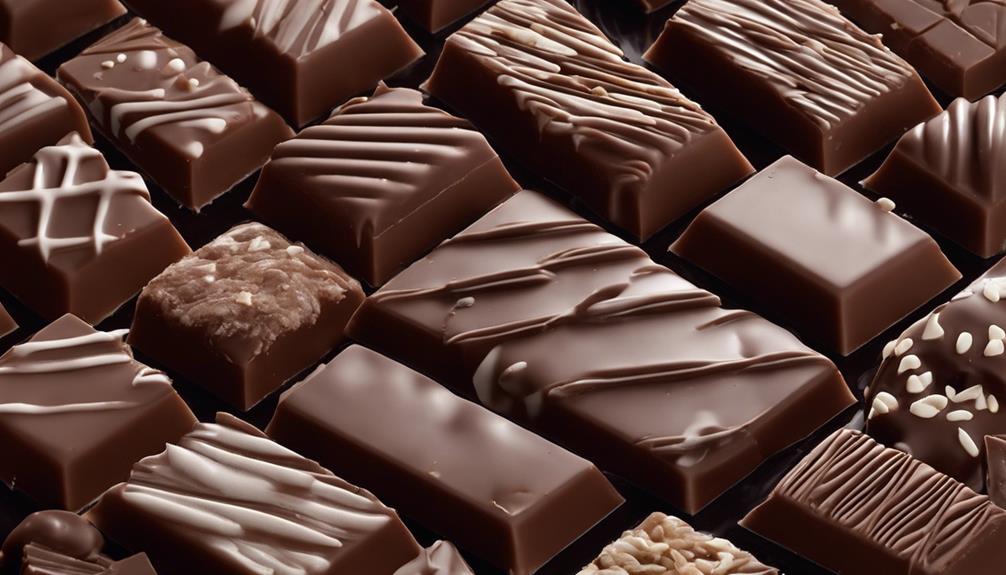
With tempered chocolate, you can feel a satisfying snap when breaking it due to its firm texture. Tempered chocolate has a smooth and glossy texture that enhances the overall eating experience. On the other hand, untempered chocolate tends to have a soft and chalky mouthfeel, lacking the satisfying snap characteristic of tempered chocolate. The firmness of tempered chocolate is what gives it that delightful snap when you break it, creating a more enjoyable sensory experience.
To better understand the differences between tempered and untempered chocolate, let's compare their textures in the table below:
| Texture | Tempered Chocolate | Untempered Chocolate |
|---|---|---|
| Firmness | Firm and Snappy | Soft and Chalky |
| Mouthfeel | Smooth and Glossy | Soft and Melts Easily |
| Breakability | Satisfying Snap | Lacks Snap |
| Melting | Resists Melting | Melts Easily |
| Eating Experience | Enhanced | Less Satisfying |
Stability at Room Temperature
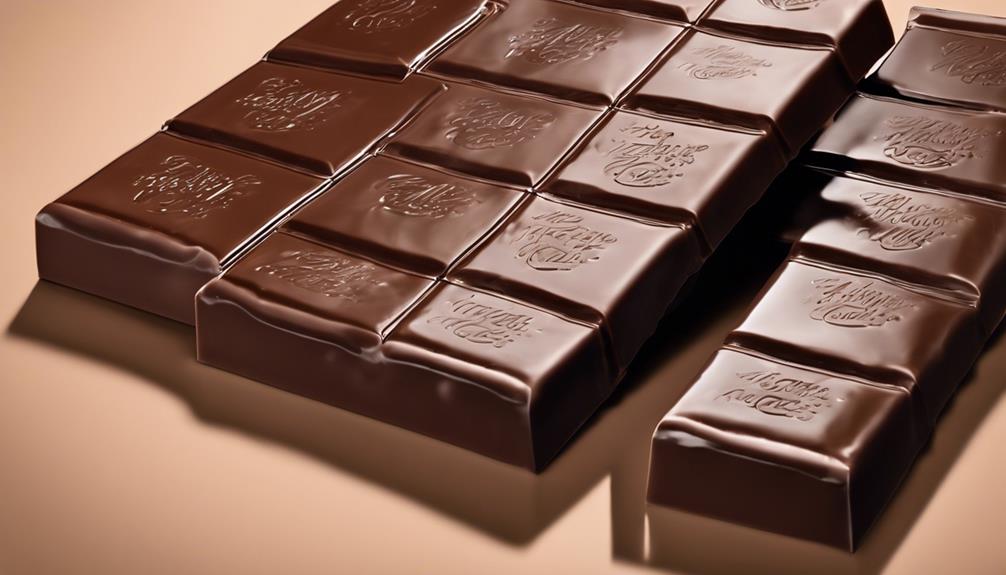
Shifting from the discussion on texture, the stability of chocolate at room temperature is a critical aspect that distinguishes tempered and untempered chocolate. When you leave tempered chocolate out, it stays firm and solid, maintaining its shape and texture without succumbing to the warmth of the room. Untempered chocolate, on the other hand, quickly softens and begins to melt when exposed to room temperature, causing it to lose its form and glossy appearance.
Here are four key points to keep in mind:
- Tempered chocolate remains firm and stable at room temperature, retaining its original shape and luster.
- Untempered chocolate is prone to softening and melting swiftly in room temperature conditions.
- The stability of tempered chocolate guarantees a more professional presentation for a longer time.
- Properly tempered chocolate has a higher resistance to heat and humidity, making it perfect for a variety of culinary applications.
Understanding these differences can help you appreciate the importance of tempering chocolate for the best stability at room temperature.
Melting Resistance
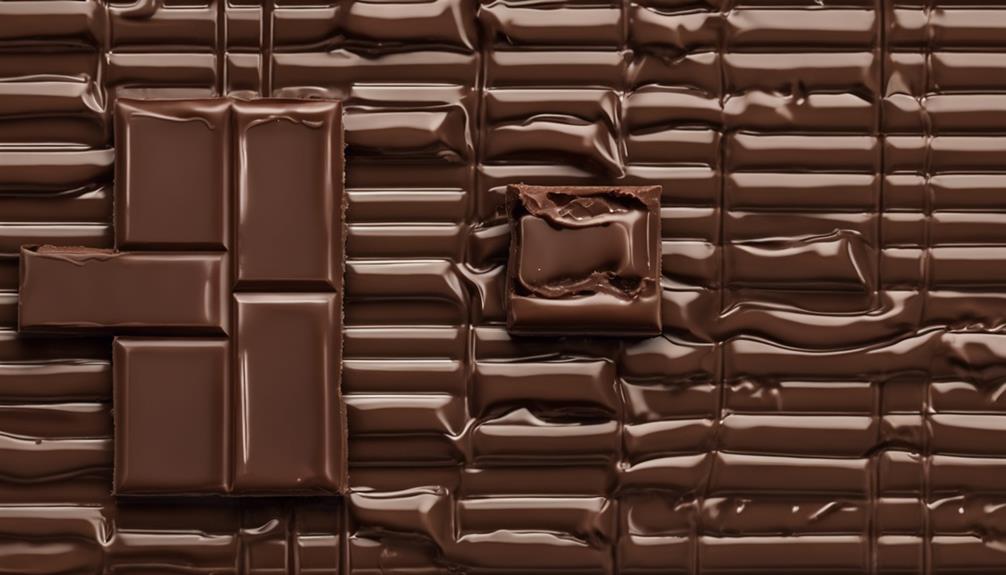
Tempered chocolate's higher melting point sets it apart from untempered chocolate, ensuring greater resistance to heat-induced melting. When we talk about melting resistance, tempered chocolate stands strong against warm temperatures due to its stable crystal structure. On the other hand, untempered chocolate, with its unstable crystal structure, quickly succumbs to heat and loses its form. To illustrate the difference more clearly, let's compare the melting resistance of tempered and untempered chocolate in the table below:
| Property | Tempered Chocolate | Untempered Chocolate |
|---|---|---|
| Melting Resistance | Higher melting point, resistant to heat-induced melting | Lower melting point, easily melts in warm conditions |
| Crystal Structure | Stable crystal structure | Unstable crystal structure |
| Form Integrity | Maintains shape and structure in warm environments | Quickly turns soft and loses form when exposed to heat |
Ideal Uses: Coating and Molding
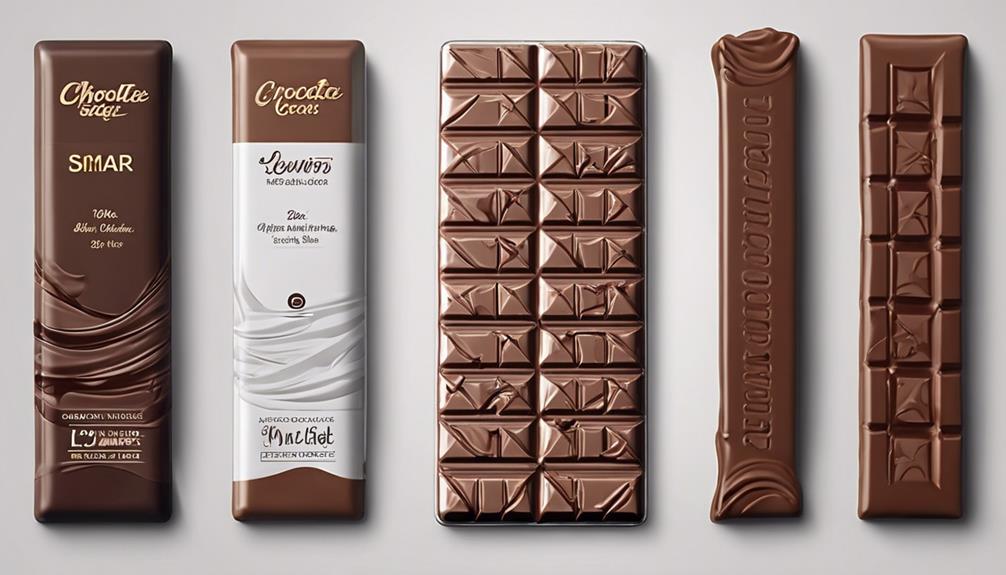
For coating truffles and molding chocolate shapes, tempered chocolate's glossy finish and firm texture make it the ideal choice.
- Smooth Coating: Temper chocolate before coating fruits, nuts, or confections to achieve a smooth, professional appearance.
- Defined Details: When molding intricate chocolate shapes, using tempered chocolate guarantees a clean release and sharp, defined details.
- Enhanced Presentation: The shiny, attractive finish of tempered chocolate on coated items enhances the overall presentation, making them visually appealing.
- Stability and Durability: The firm texture of tempered chocolate provides stability and durability, essential for both coating and molding processes.
Tempered chocolate's glossy finish not only adds a professional touch to your creations but also ensures that your coated items look inviting and appetizing. By using tempered chocolate for coating and molding, you ensure that your final products will have a polished and elegant appearance.
Glossy Finish
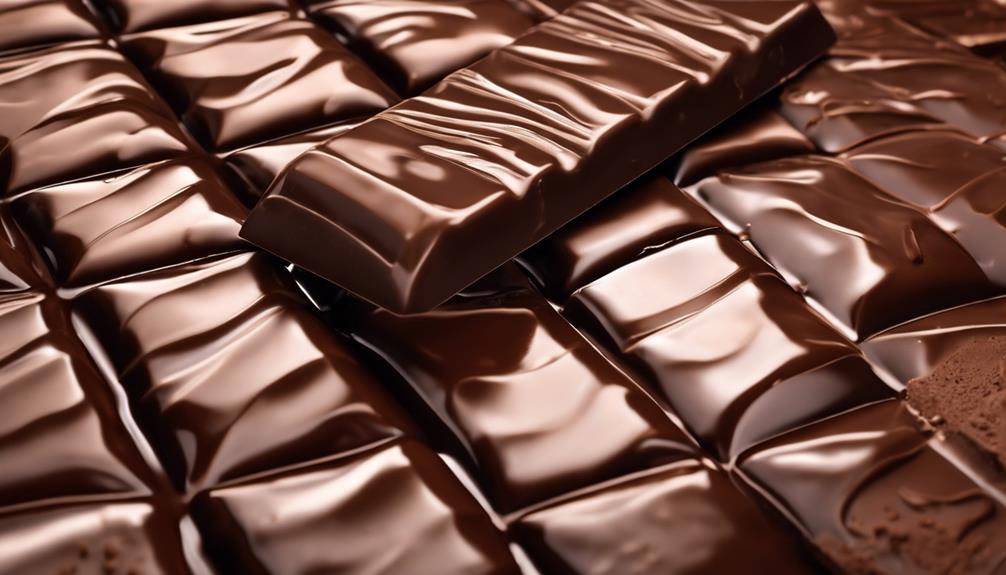
When comparing tempered and untempered chocolate, one noticeable difference is the glossy finish.
Tempered chocolate shines brilliantly due to the proper alignment of cocoa butter crystals.
In contrast, untempered chocolate often lacks this shine, appearing dull and uneven in texture.
Appearance Comparison
In comparing tempered and untempered chocolate, the glossy finish plays an essential role in determining the overall quality and visual appeal of the final product. When looking at appearance differences between the two:
- Tempered chocolate showcases a shiny and reflective surface that beautifully captures light, enhancing its luxurious look.
- Untempered chocolate, on the other hand, lacks this glossy finish, appearing dull or matte, which may not be visually appealing.
- The smooth and reflective nature of tempered chocolate gives it a professional and polished appearance, indicating skillful craftsmanship.
- Conversely, untempered chocolate might present a rough or blotchy surface, lacking the finesse and elegance associated with properly tempered chocolate.
Texture Analysis
Achieving a glossy finish on chocolate involves mastering the art of proper crystallization during the tempering process. When chocolate is tempered correctly, it develops a shiny exterior that reflects light, giving it a professional and appealing look.
In contrast, untempered chocolate lacks this glossy finish, appearing dull and matte in comparison. The smooth and shiny texture of tempered chocolate enhances the overall visual appeal of desserts and confections.
This glossy finish is a clear indicator that the cocoa butter within the chocolate has been tempered well, ensuring stability and a pleasing mouthfeel. So, next time you're working with chocolate, remember that proper crystallization is the key to achieving that beautiful glossy finish that makes your treats irresistible.
Impact on Taste
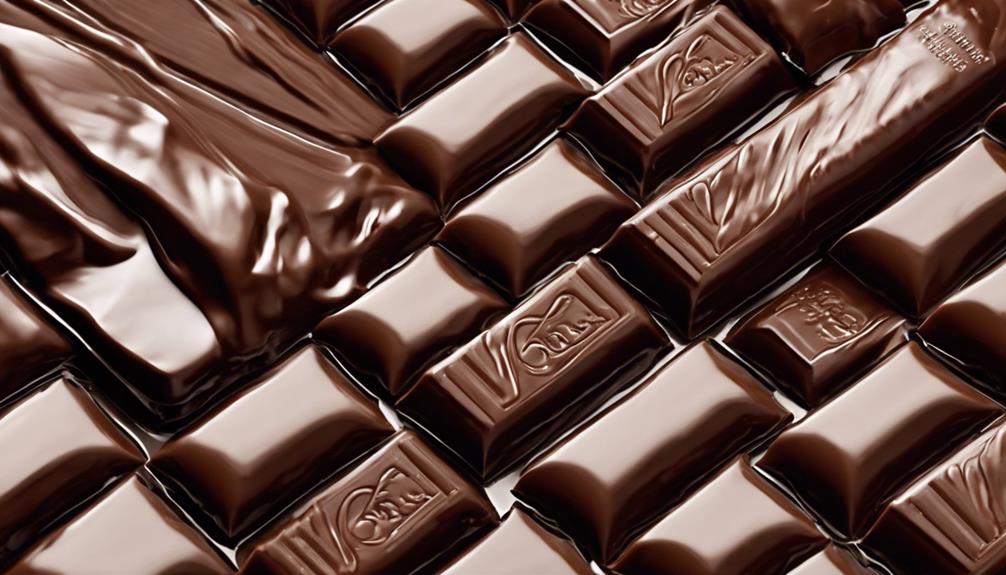
Experiencing the taste of tempered chocolate versus untempered chocolate reveals a stark contrast in flavor quality and texture satisfaction.
- Tempered chocolate has a smoother mouthfeel, melting effortlessly on the tongue, allowing the flavors to unfold gradually.
- Untempered chocolate, on the other hand, can feel gritty and chalky in the mouth, detracting from the overall taste experience.
- The flavor of tempered chocolate is cleaner and more pronounced, as the proper crystallization process guarantees a well-balanced taste profile.
- Untempered chocolate may taste inconsistent, with some parts overly sweet while others lack depth, due to the improper texture and structure.
Importance of Tempering
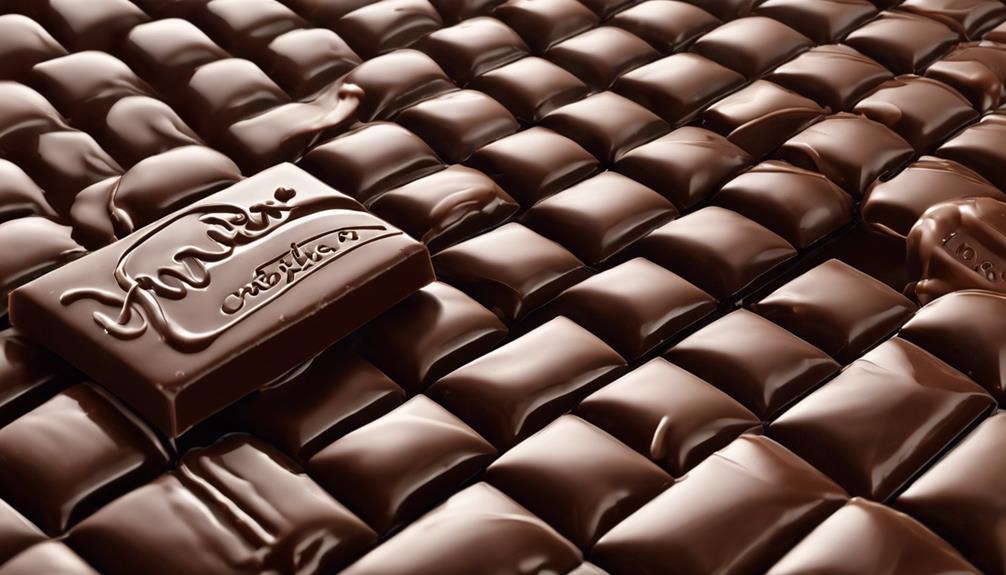
Shifting from discussing the impact of tempered versus untempered chocolate on taste, it becomes evident that understanding the importance of tempering chocolate is fundamental for achieving desirable texture and appearance in the final product.
When we talk about tempering chocolate, we're actually referring to a process that guarantees the right type of crystals form within the chocolate. These crystals are vital because they help give chocolate its signature glossy finish and that satisfying snap when you break it. Without proper tempering, chocolate can become dull-looking, soft, or even grainy in texture, which mightn't be what you're aiming for in your culinary creations.
By aligning the fatty acid crystals through tempering, we create a smooth texture that's consistent throughout the chocolate. This smoothness is what allows us to mold, coat, and create beautiful decorations with chocolate.
Frequently Asked Questions
What Are the 3 Characteristics of Tempered Chocolate?
When it comes to tempered chocolate, three key characteristics stand out: it hardens to a glossy finish, sets quickly for a satisfying snap, and offers a smooth mouthfeel. These traits make it a favorite for professional chocolate creations.
What Is the Difference Between Tempered and Untempered Chocolate Strawberries?
When it comes to chocolate-covered strawberries, the key difference between tempered and untempered versions lies in their appearance, texture, and shelf life. Tempered strawberries boast a glossy finish, satisfying snap, and longer-lasting quality compared to untempered ones.
Does Untempered Chocolate Taste Different?
Untempered chocolate tastes different from tempered chocolate. It lacks the smooth texture and glossy finish. The mouthfeel is softer and chalkier. The unstable crystalline structure makes it melt easily. The overall experience is less satisfying.
What Is the Difference Between Melting and Tempering Chocolate?
Melting chocolate turns it liquid, while tempering involves precise heating and cooling for a glossy finish. Tempered chocolate stays firm at room temp, unlike melted. A key difference is texture—tempered choc offers a satisfying snap.
What is the Role of Cocoa Butter in Tempered and Untempered Chocolate?
Cocoa butter plays a crucial role in tempered and untempered chocolate. In tempered chocolate, it helps create a smooth and glossy finish, while in untempered chocolate, it forms a softer texture. The benefits of cocoa butter extend to enhancing flavor, providing a creamy mouthfeel, and improving the chocolate’s shelf life.
Conclusion
To wrap up, comprehending the disparities between tempered and untempered chocolate is vital for achieving the perfect texture, appearance, and stability in your chocolate creations.
By tempering your chocolate properly, you can guarantee a smooth, glossy finish with a satisfying snap and enhanced taste.
So next time you're making chocolate treats, remember the significance of tempering to elevate your creations to the next level.
Don't settle for less than the best – temper your chocolate for delicious results!

